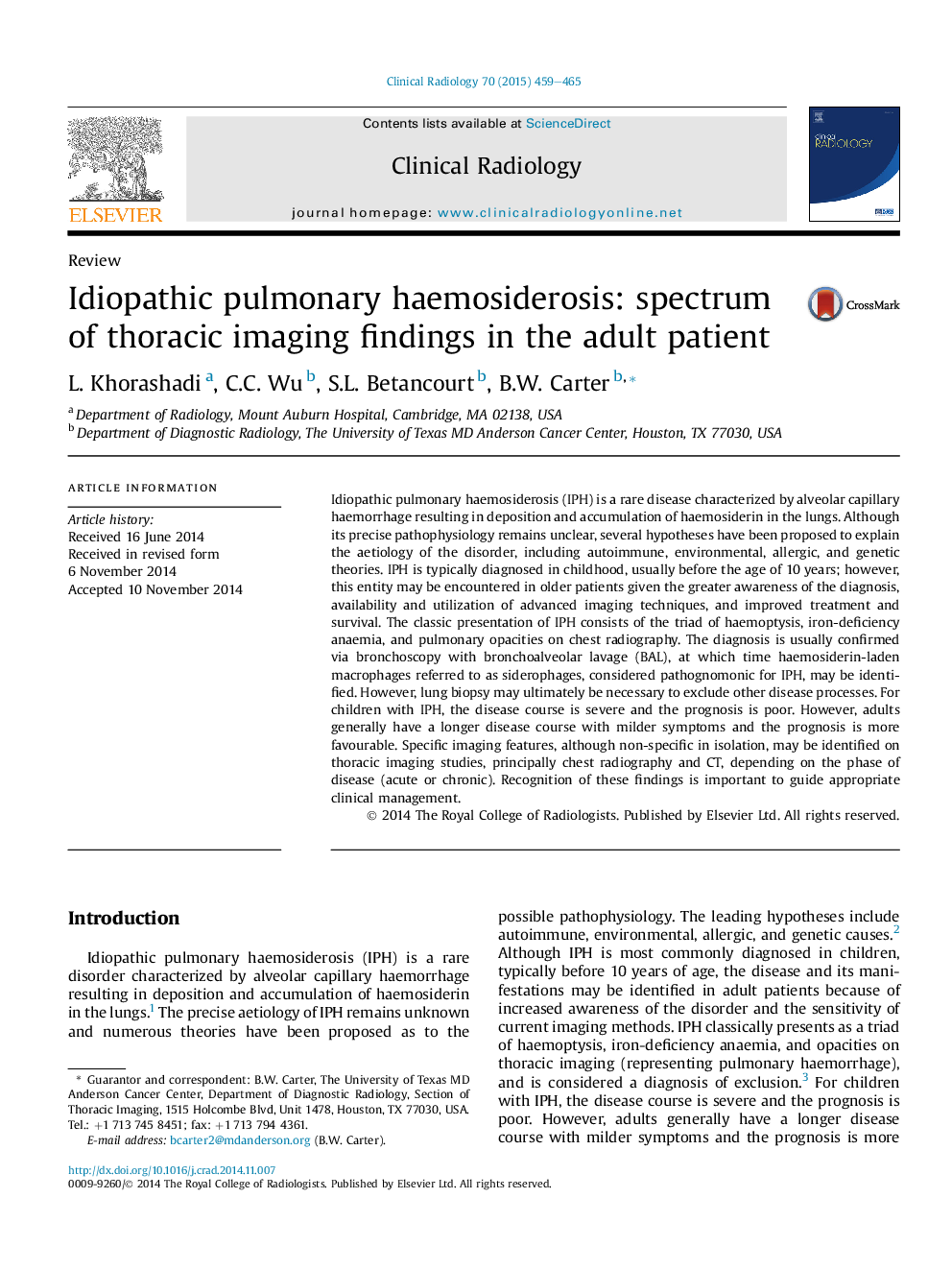| Article ID | Journal | Published Year | Pages | File Type |
|---|---|---|---|---|
| 6190938 | Clinical Radiology | 2015 | 7 Pages |
Idiopathic pulmonary haemosiderosis (IPH) is a rare disease characterized by alveolar capillary haemorrhage resulting in deposition and accumulation of haemosiderin in the lungs. Although its precise pathophysiology remains unclear, several hypotheses have been proposed to explain the aetiology of the disorder, including autoimmune, environmental, allergic, and genetic theories. IPH is typically diagnosed in childhood, usually before the age of 10 years; however, this entity may be encountered in older patients given the greater awareness of the diagnosis, availability and utilization of advanced imaging techniques, and improved treatment and survival. The classic presentation of IPH consists of the triad of haemoptysis, iron-deficiency anaemia, and pulmonary opacities on chest radiography. The diagnosis is usually confirmed via bronchoscopy with bronchoalveolar lavage (BAL), at which time haemosiderin-laden macrophages referred to as siderophages, considered pathognomonic for IPH, may be identified. However, lung biopsy may ultimately be necessary to exclude other disease processes. For children with IPH, the disease course is severe and the prognosis is poor. However, adults generally have a longer disease course with milder symptoms and the prognosis is more favourable. Specific imaging features, although non-specific in isolation, may be identified on thoracic imaging studies, principally chest radiography and CT, depending on the phase of disease (acute or chronic). Recognition of these findings is important to guide appropriate clinical management.
